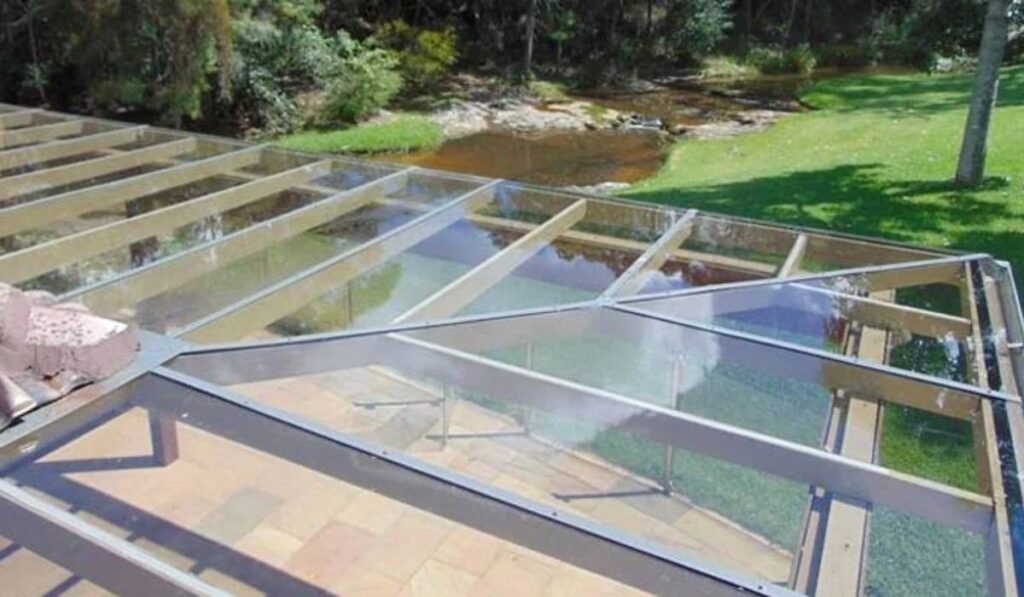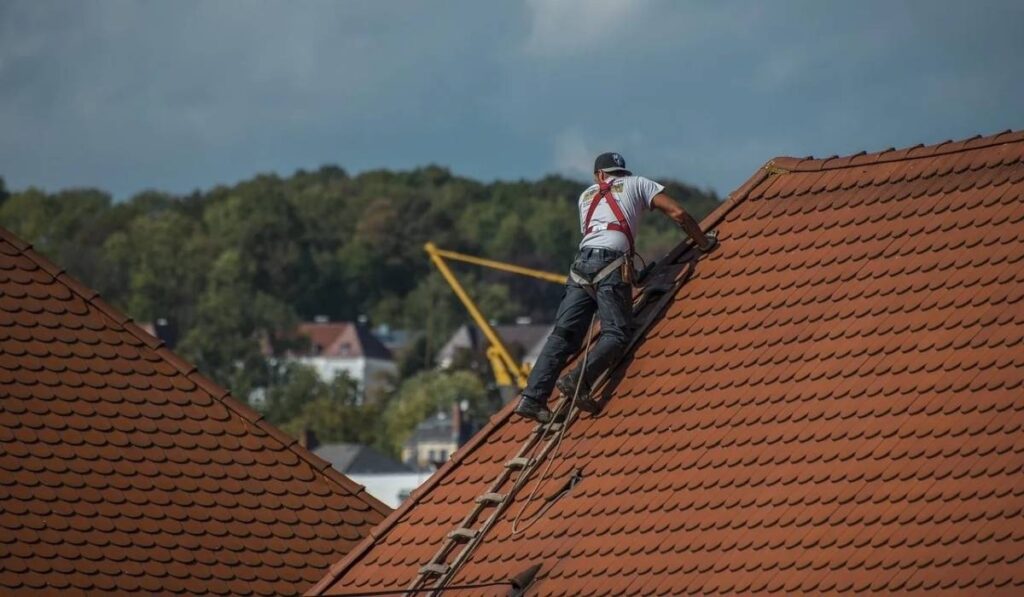An acryldach roof is a modern solution designed for homeowners who want a combination of durability, transparency, and aesthetic appeal. Made from high-grade acrylic materials, acryldach roofing sheets are widely used for patios, carports, and greenhouses due to their superior light transmission and weather resistance. Unlike traditional metal or asphalt roofs, an roof provides a clean, modern appearance while allowing natural light to filter through, creating a bright and welcoming environment underneath. These roofs are engineered to withstand harsh UV rays, rain, wind, and even hail, making them ideal for both residential and commercial outdoor structures.
Why Choose an acryldach Roof
Homeowners and architects are increasingly turning to acryldach roofing systems because of their long-term performance and versatility. The primary advantage of an acryldach roof is its ability to maintain clarity over time. While polycarbonate or fiberglass panels can yellow or become brittle after years of sun exposure, acryldach retains its transparency and smooth surface. It also provides better insulation against heat, which is especially beneficial for greenhouses and patios where temperature control matters. Furthermore, roofing is lightweight yet strong, allowing for easy installation on existing frames without the need for additional reinforcement. Its scratch resistance and low maintenance requirements make it one of the most practical roofing choices available in 2025.
Durability and Weather Resistance

Durability is one of the most defining features of acryldach roofing. Unlike other plastic roofing materials that degrade under constant exposure to UV rays, roofs are designed with built-in UV protection that prevents fading and cracking. This makes them ideal for areas with extreme sunlight or changing weather conditions. The smooth surface of an acryldach roof repels dirt and debris, meaning less cleaning is required to maintain its clarity. During heavy rainfall, the sheets offer excellent water runoff due to their sleek design, preventing water accumulation and potential leakage. Their impact resistance also protects against hailstones and falling branches, making them a long-lasting investment for outdoor spaces like patios, carports, and greenhouses.
Energy Efficiency and Light Transmission
A key reason many property owners choose acryldach roofing is its outstanding light transmission properties. It allows natural light to flow through, reducing the need for artificial lighting during the day. This makes it an excellent choice for greenhouses where plants require consistent sunlight, or for patios where a bright and airy atmosphere is desired. Despite its transparency, an roof blocks harmful ultraviolet rays, protecting both people and plants underneath from damage. Additionally, it provides effective insulation by minimizing heat transfer, helping to keep spaces cooler in summer and warmer in winter. This energy efficiency makes acryldach roofing not only environmentally friendly but also cost-effective in the long run.
Design Versatility and Aesthetic Appeal

One of the reasons acryldach roofs are gaining popularity in 2025 is their aesthetic flexibility. Available in a range of finishes, colors, and thicknesses, they can complement a variety of architectural styles. Whether you prefer a clear, frosted, or tinted look, there’s an acryldach option that fits your design goals. For modern homes, clear panels provide a sleek and minimalist appearance, while tinted versions offer additional shade and privacy. These roofing sheets can be easily shaped or cut to match specific frame designs, making them suitable for complex structures like curved greenhouses or angled patio roofs. Their visual appeal enhances the overall value of your property while maintaining functionality and comfort.
Maintenance and Longevity
Maintaining an acryldach roof is straightforward, which adds to its appeal among homeowners. The material’s non-porous surface resists mold, mildew, and dirt buildup, so occasional cleaning with mild soap and water is usually sufficient. Unlike metal roofs that may require repainting or sealing, acryldach panels retain their clarity and finish for many years with minimal effort. With proper installation and care, an acryldach roof can last for decades, often outperforming other roofing materials in terms of longevity and appearance. Because it resists corrosion, rust, and discoloration, it is especially well-suited for humid or coastal environments where other materials may fail over time.
Installation Process and Tips

Installing an acryldach roof is relatively simple when compared to heavier materials like glass or metal. The lightweight nature of acrylic sheets means they can be handled and installed without specialized equipment. However, precision during installation is essential to ensure durability and weatherproofing. Proper sealing of joints and edges helps prevent water leaks, and allowing for thermal expansion ensures the panels remain intact during temperature fluctuations. Many manufacturers offer pre-cut panels and mounting systems that simplify installation for do-it-yourself homeowners. For larger projects, professional installation is recommended to achieve the best structural integrity and finish.
Applications of acryldach Roofing
The versatility of acryldach roofing extends to a wide range of applications. For patios, it offers the perfect combination of shelter and openness, allowing you to enjoy outdoor spaces regardless of the weather. In carports, the material shields vehicles from direct sunlight, rain, and debris while maintaining a bright and airy atmosphere. Greenhouses benefit most from acryldach roofs because the high light transmission promotes healthy plant growth while the UV protection safeguards delicate species from excessive radiation. Additionally, commercial establishments use acryldach for covered walkways, outdoor dining areas, and skylights due to its strength and clarity. This adaptability makes it one of the most useful and modern roofing solutions available today.
Cost and Value Considerations

While acryldach roofing can be more expensive initially than some other plastic or metal options, its long-term value is undeniable. The material’s extended lifespan, minimal maintenance, and energy-saving benefits justify the upfront cost. It eliminates frequent replacements and repair expenses that are often associated with cheaper roofing alternatives. The investment also enhances property aesthetics and functionality, adding resale value to your home or business. When considering total ownership costs, including installation and maintenance, an acryldach roof stands out as a cost-effective and sustainable choice for 2025 and beyond.
Buying Guide for 2025
When selecting the best acryldach roof for your patio, carport, or greenhouse, several factors should guide your decision. First, consider the thickness of the panels. Thicker sheets provide greater insulation and strength, ideal for regions with harsh weather. Second, decide on the finish that suits your environment—clear for maximum light, frosted for diffused illumination, or tinted for additional shading. Third, ensure that the sheets are UV-coated and impact-resistant for long-lasting protection. It’s also important to verify the warranty terms offered by the manufacturer, as high-quality acryldach panels often come with extended warranties. Finally, compare installation systems and accessories, as a complete roofing kit can simplify the installation process and ensure better sealing and durability.
Future Trends in acryldach Roofing
As sustainable building materials continue to gain importance, acryldach roofing is expected to play a major role in eco-friendly architecture. Future innovations may include solar-compatible panels that integrate photovoltaic systems for energy generation. Improved thermal efficiency and sound insulation are also areas of ongoing development. In 2025, we are already seeing increased use of recyclable materials and eco-conscious production methods in acryldach manufacturing. As a result, homeowners and builders can expect even higher performance, longer lifespans, and reduced environmental impact from next-generation roofing systems.
Conclusion
The acryldach roof stands out as a practical, aesthetic, and environmentally responsible choice for modern living spaces. Whether used for a patio, carport, or greenhouse, it delivers the perfect blend of strength, transparency, and style. Its ability to transmit light while resisting damage from weather, UV rays, and impact ensures that it remains one of the top roofing options in 2025. By investing in a quality acryldach roofing system, you not only enhance the comfort and usability of your outdoor spaces but also make a lasting contribution to the beauty and efficiency of your property.
Frequently Asked Questions
1. What makes an acryldach roof better than polycarbonate?
- An acryldach roof maintains its clarity for longer periods and offers superior UV resistance compared to polycarbonate, which can yellow or become brittle over time. It is also more scratch-resistant and visually appealing, making it a better long-term investment.
2. How long does an acryldach roof typically last?
- With proper care and maintenance, an acryldach roof can last several decades. Its resistance to UV damage, impact, and corrosion helps it maintain structural integrity and appearance much longer than many alternative materials.
3. Can I install an acryldach roof myself?
- Yes, installation can be done by homeowners with basic skills, thanks to its lightweight and easy-to-handle panels. However, for large projects or complex designs, professional installation is recommended to ensure maximum durability and correct sealing.
4. Does an acryldach roof require special cleaning products?
- No, cleaning is simple. A mixture of mild soap and water with a soft cloth or sponge is sufficient to keep the panels clean. Harsh chemicals or abrasive cleaners should be avoided to prevent surface damage.
5. Is an acryldach roof environmentally friendly?
- Yes, acryldach roofing is eco-friendly because it reduces the need for artificial lighting, is recyclable, and has a long lifespan. Many modern variants are also manufactured using sustainable processes, contributing to reduced environmental impact.









